Fine weather has arrived and flowers are opening everywhere in the garden, delighting butterflies and gardeners with their beauty. Why not take the opportunity to make a beautiful dried flower wreath? It will make a statement hung on a wall, on a door or simply placed in the centre of a table, even at a wedding. Natural materials have been very on-trend in recent years. Raffia, linen, rattan furniture and dried flowers bring a bohemian touch to the home. Plus, this extends their lifespan and helps maintain the garden at the same time.
Discover, through our tutorial, how to make a dried flower wreath to decorate your interior.
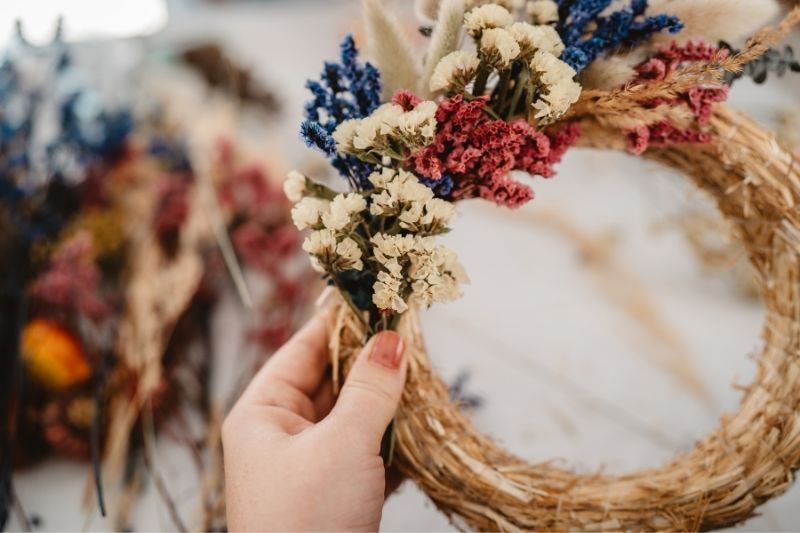
When and how to harvest flowers?
Depending on variety, flowers to dry are picked progressively through the months. For example, lavender should be picked between June and July, towards the end of its flowering. statices are harvested during summer, while hydrangea flowers are harvested later, around September. Preferably pick flowers that have just opened. Harvest during daytime, or late afternoon, avoiding early morning when dew is still present. Likewise, always harvest on a sunny day to prevent ambient humidity from causing mould.
Arm yourself with a pruning shear or scissors to cut stems cleanly. Some plant varieties can cause itching, such as thistles or palm leaves, so feel free to wear a pair of gloves for protection.
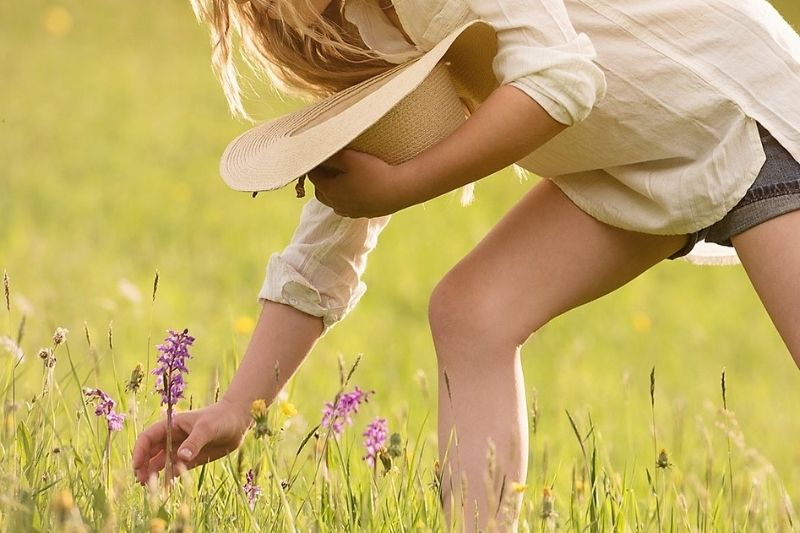
Country walks can be an opportunity for a lovely harvest - photo by Pezibear (Pixabay)
Which flower varieties to choose?
For a romantic wreath, create a pretty composition of pink flowers, such as peonies (including the magnificent 'Monsieur Jules Elie') and Achillea millefolium 'Sammetriese'. Add some hydrangea (Hydrangea macrophylla 'Benelux'), traditional roses and a few downy aments of Salix chaenomeloides 'Mount Aso'. For a successful wedding, add some white flowers of Achillea kellereri and gypsophila, plus statice Goniolimon tataricum (Limonium).
You can also create a colourful floral composition by combining azure blue and golden yellow. Lavender is very interesting for its intoxicating scent, evoking heat and aromatic scents of southern France. Add some azure globes of Echinops, and some thistles for their original round shapes. Yellow-flowered Achillea, the strawflower 'Granvia Gold' and Craspedia globosa will add a golden note.
To finish your floral creations, you can add some foliage branches of Eucalyptus, ferns or ivy. For originality, add money-plant (honesty) stems and Chinese lanterns. For a rustic feel, also add wheat spikes, silky bottlebrushes of Pennisetum and a few stems of ornamental grasses.
In all cases, limit yourself to two or three matching flower colours to give a contemporary look to your wreath. Too many colours or a disharmonious mix will create an ageing effect from another era.

A gold-and-blue combination: yellow-flowered Achillea, lavender, Echinops and Craspedia globosa
How to dry flowers?
Drying fresh flowers is very easy; follow these steps:
1- Remove foliage from stems and any thorns.
2- Make small floral bunches of 3 to 6 stems maximum. Tie the bunch with natural string or raffia.
3- Hang bunches upside down in a dry, room-temperature, ventilated space, such as a garage or attic. Do not expose flowers to light that could fade their colours.
4- Check occasionally for any mould formation. Flowers will be dry after about 15 days.
How to make a dried flower wreath?
Materials needed:
- A pruning shear or scissors
- Light-coloured string, transparent nylon thread or florist's wire (widely used in floral design)
- A wreath of flexible branches (wisteria, osier, hazel, vine woody climbing stems...), straw or metal.
Steps:
1- Place the ready-to-use wreath in front of you. It is also possible to make one yourself with flexible branches (wisteria, osier, hazel, vine woody climbing stems...). Form a circle with the branches, then secure them together with natural string.
2- Tie your string to the wreath.
3- Place one or several flower stems on the wreath, then secure them by wrapping the thread around the wreath and stems. Continue like this, alternating flowers. Be careful not to overload the wreath with flowers to avoid a dated look reminiscent of grandmother's era. Also favour two to three harmonious colours at most.
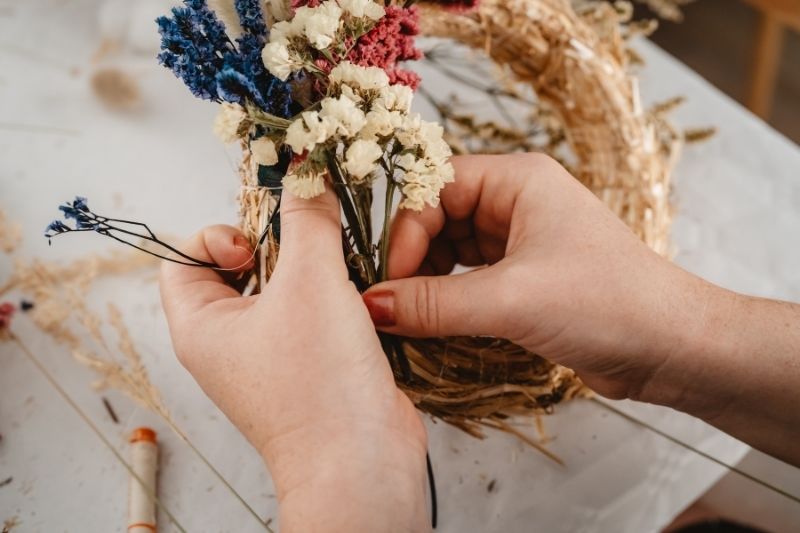
4- For a full wreath, tuck the last stems under the first ones and secure everything by continuing to wrap the thread around the whole.
5- Finish by tying off your string.
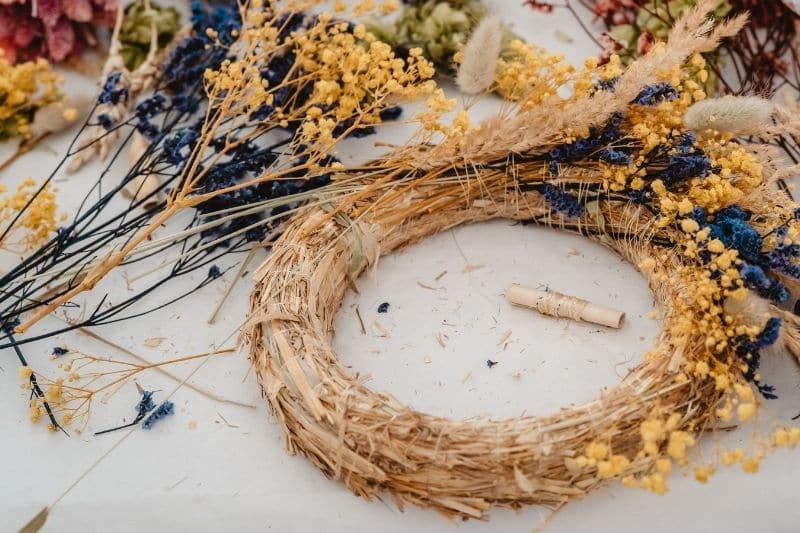
There you are, your wreath is finished! You can now fix it to a wall, hang it on your front door, place it on a table or use it as decoration for memorial ceremonies and weddings.
To go further:
- Also discover our tutorials to make a natural Christmas wreath or a Christmas wreath with hips.
- Find all our cut flower seeds.
- Browse our article to create a garden of cut flowers to make your own bouquets.
- Discover our article on the return of the floral buttonhole for your wedding.
- Discover Pierre's rustic bouquet for a weary garden.



































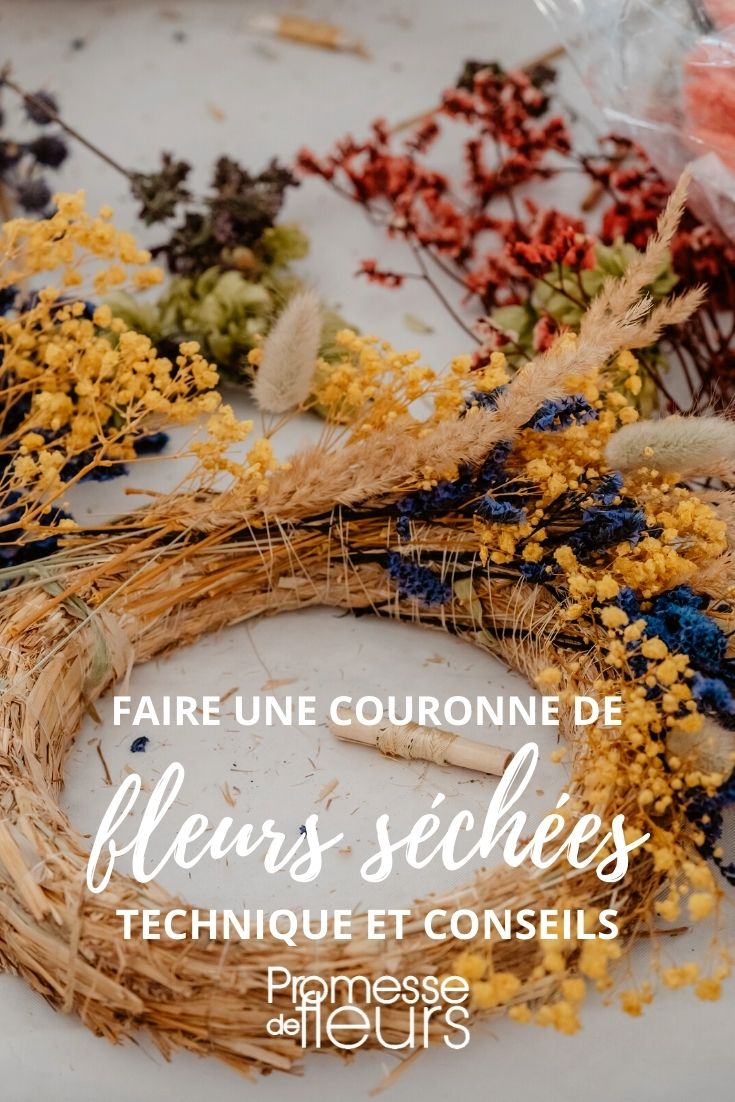
Comments